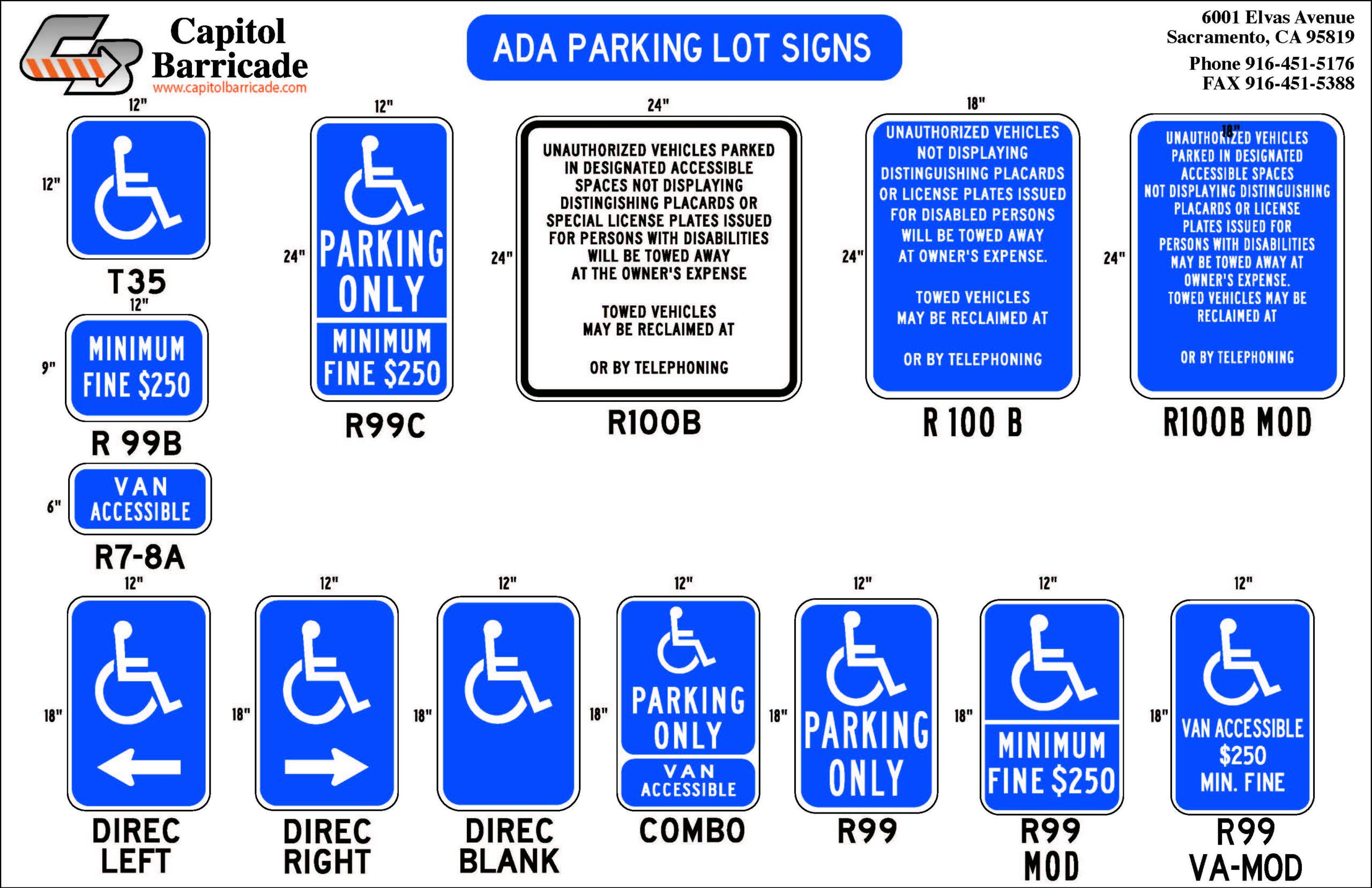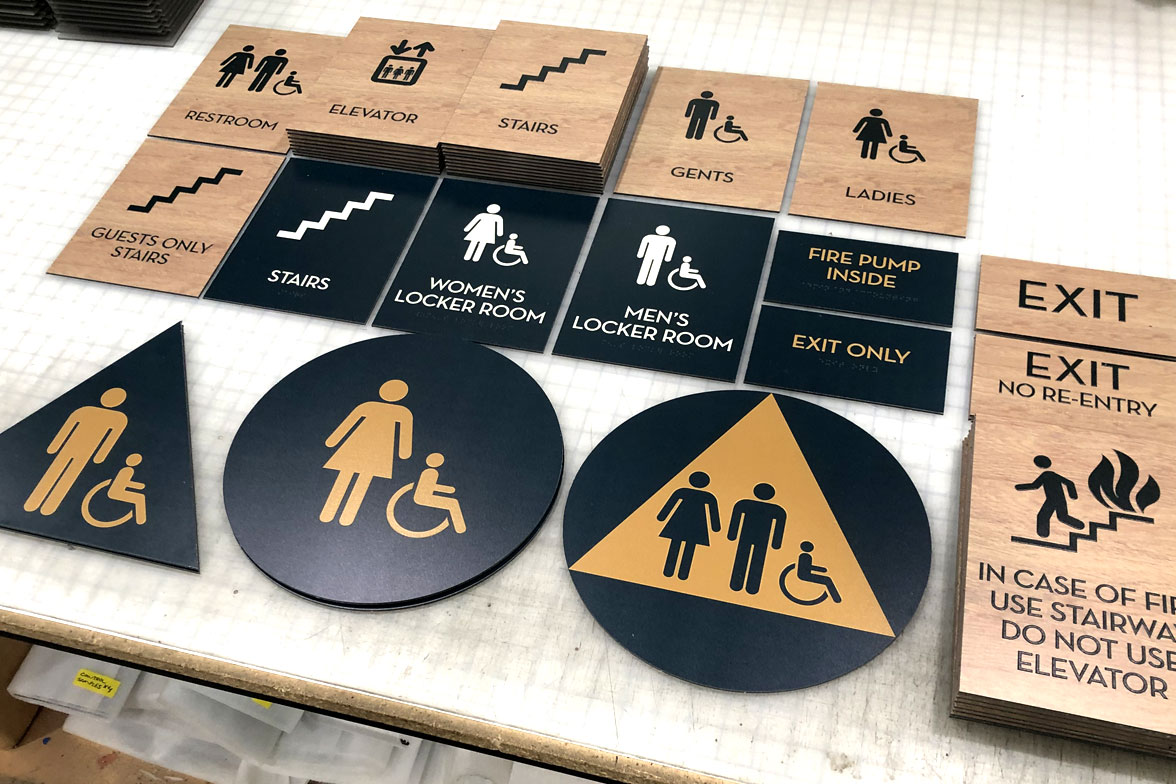The Function of ADA Signs in Following Access Standards
The Function of ADA Signs in Following Access Standards
Blog Article
ADA Signage: Guaranteeing Ease Of Access and Conformity in Public Spaces
ADA signage plays a crucial function in assuring accessibility and compliance within public spaces, significantly contributing to a comprehensive atmosphere for individuals with disabilities. By adhering to ADA standards, signage not only helps with navigating but likewise underscores an organization's devotion to diversity and equality. As we explore the subtleties of ADA signage, from tactile functions to design complexities, it's critical to consider exactly how these components coalesce to support the legal rights of all customers. What are the usual mistakes organizations encounter in maintaining compliance, and how can future patterns in signs proceed to drive accessibility forward?
Value of ADA Signs
In modern-day culture, the relevance of ADA signs prolongs beyond mere compliance with legal requireds to personify a dedication to inclusivity and availability for all individuals. These signs are important in producing environments where people with handicaps can browse public areas with the same ease and self-reliance as those without impairments. By providing clear and standard information, ADA signs guarantees that everyone can access centers, solutions, and information without obstacles.
The importance of ADA signage hinges on its ability to boost the lifestyle for people with handicaps by advertising equal access. It eliminates the barriers that might or else impede their ability to take part fully in community life. These indications offer as visible indications of a company's commitment to variety and equality, mirroring broader social worths that champion the rights and dignity of all people.
Furthermore, ADA signs plays a critical role in public safety and security. By assisting people to exits, bathrooms, and various other vital centers, it ensures that all individuals, no matter of physical ability, can evacuate securely throughout emergencies. In summary, ADA signs is not just a governing requirement but a powerful tool for fostering a comprehensive and fair society.
Crucial Element of Conformity

Positioning is essential; indicators have to be mounted in areas that are reachable and easily visible. Commonly, signs must be installed between 48 and 60 inches from the ground to guarantee availability for both standing and wheelchair users. Responsive components, such as Braille, are necessary for people with visual impairments, providing critical details in a non-visual layout.
High-contrast colors between the text and background are essential to boost readability for individuals with low vision. The ADA mandates specific comparison ratios to guarantee clearness. Additionally, personality size is a key factor to consider, with minimum height requirements determined by the checking out distance to make certain readability from different angles.
Layout Considerations for Availability
Creating easily accessible signage calls for a careful strategy to guarantee it satisfies the requirements of all customers, especially those with disabilities. This includes thinking about numerous style components that improve readability and use. Secret aspects include the selection of font, color comparison, and tactile attributes. Fonts should be sans-serif, with easy and clear letterforms, to promote easy additional reading analysis. The dimension of the text is similarly vital, with ADA guidelines advising a minimum elevation based upon viewing distance to make sure clarity.
Contrasting shades in between message and history are essential for visibility, particularly for individuals with find out this here visual disabilities. A high comparison proportion assists identify the message from its background, improving readability under numerous illumination problems. Additionally, tactile elements, such as Braille and elevated personalities, are vital for individuals who are blind or have reduced vision. These components should be located at a consistent height and position to ensure easy access and comprehension.
Furthermore, the placement of signage plays a significant duty in access. Indicators must be set up in locations that are unobstructed and conveniently obtainable. Guaranteeing that signs is placed at ideal elevations and angles allows all users, consisting of those utilizing wheelchairs, to connect with them properly.
Usual Mistakes to Prevent

An additional common mistake is the inaccurate placement of signage. ADA standards specify specific height and place requirements to make certain that indications are obtainable and quickly visible by all people, including those using mobility devices. Ignoring these guidelines not only hinders access but also runs the risk of non-compliance with lawful standards.
Furthermore, insufficient comparison between text and history is a frequent oversight. Sufficient comparison is essential for readability, especially for people with reduced vision. Designers sometimes select shades that are aesthetically enticing but lack the needed comparison, making the message difficult to determine.
Finally, some developers fall short to incorporate tactile elements, such as Braille, which are critical for individuals who are blind. Omitting these functions not only leads to non-compliance with ADA guidelines yet additionally restricts accessibility for a sector of the populace that relies upon tactile information.
Future Trends in Signage
Developments in modern technology and increasing awareness of inclusivity are shaping the future trends in signage layout. As culture comes to be his comment is here extra aware of varied demands, the assimilation of wise modern technologies right into signage is obtaining grip. Digital signage, for instance, is advancing to consist of interactive functions and real-time updates, which can be important in supplying dynamic information in public spaces. These signs often include touch displays or gesture-based controls, allowing users to browse content customized to their details demands.
Another emerging trend is the use of augmented reality (AR) to boost user experience. AR-enabled signs can overlay digital info onto the physical environment, supplying aesthetically impaired individuals with auditory or haptic feedback. ADA Signs. This modern technology not just boosts access however additionally produces an interesting experience for all users
Sustainability is likewise a significant aspect affecting signage patterns. Green materials and energy-efficient lights solutions are being prioritized to line up with international environmental goals. Additionally, advancements in materials science are causing the growth of even more long lasting and weather-resistant indicators.
Conclusion
ADA signage plays a crucial duty in assuring accessibility and conformity within public rooms by including responsive elements, high-contrast colors, and critical placement. The adherence to ADA standards not only helps with risk-free navigation for individuals with specials needs however likewise signifies an organization's dedication to diversity and inclusivity. By avoiding common blunders and welcoming future fads, public rooms can remain to progress these worths, making certain that the civil liberties and self-respect of all individuals are respected and promoted.
ADA signage plays an essential duty in assuring availability and compliance within public spaces, significantly adding to a comprehensive setting for individuals with impairments. As we explore the subtleties of ADA signs, from tactile features to make intricacies, it's crucial to take into consideration exactly how these elements integrate to maintain the legal rights of all users.In modern-day culture, the importance of ADA signage prolongs beyond plain compliance with legal requireds to embody a commitment to inclusivity and accessibility for all people. By providing standardized and clear details, ADA signs ensures that every person can access facilities, services, and info without barriers.
ADA signage plays a vital function in guaranteeing access and compliance within public rooms by incorporating tactile components, high-contrast colors, and tactical placement. (ADA Signs)
Report this page